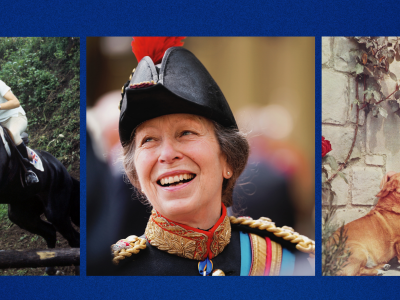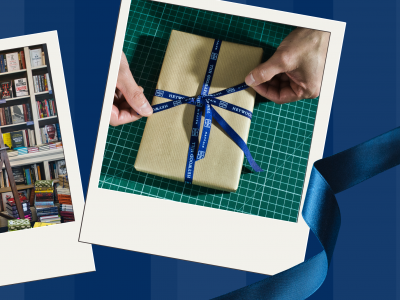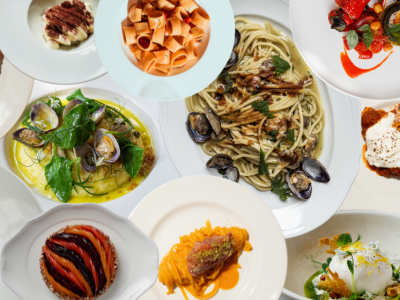Soon after the procession had arrived back at Buckingham Palace following the coronation of Charles III, the royal party assembled in front of the official photographer, Hugo Burnand. The family group portrait, in particular, attracted much media comment, mainly because of two absentees, the Dukes of York and Sussex (both had been at the service in Westminster Abbey but were not in the official portrait afterwards). More telling, perhaps, was the placement of those who were actually in the photograph. For who do we see immediately next to The King? Queen Camilla is on one side, of course, standing to the monarch’s left. His ‘right-hand man’, however, is the Princess Royal.
An Exclusive Profile: Princess Anne at 75
8th August 2025
The famously hard-working Princess Anne’s role has become ever more vital during a challenging year for The King. Royal author Robert Hardman provides insight as she approaches a milestone birthday. As featured in The Illustrated Royalty in Britain.
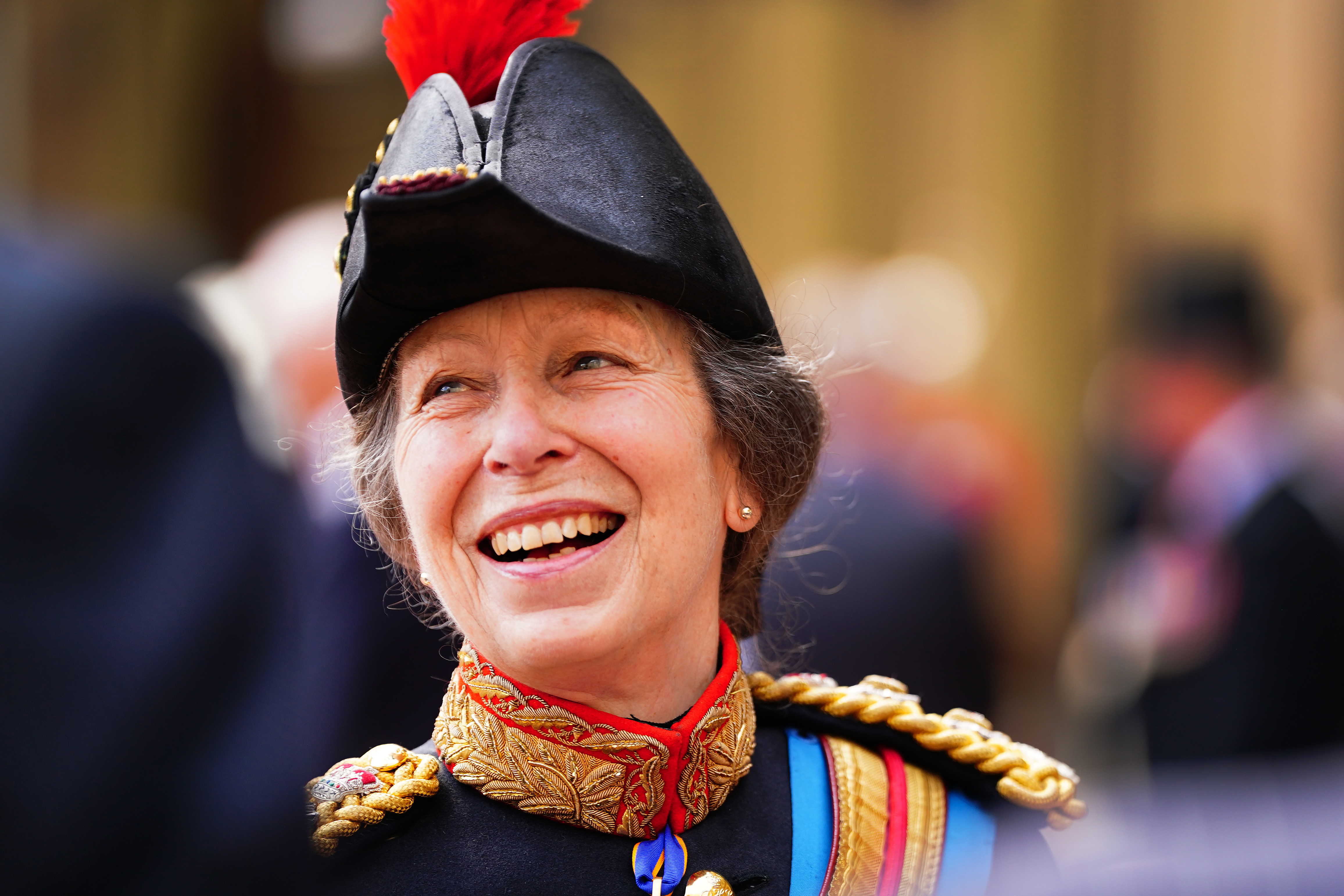

And given the turn of events since, she has more than earned that accolade. For time and again, when both The King and The Princess of Wales (and, by extension, The Prince of Wales, too) were unable to carry out important royal duties all through the profoundly challenging year which followed, the rest of the family had to step up and plug the gaps. Very often, it was The Princess who was to be found doing the heavy lifting. A typical example was back in those dark days of February 2024. The King had just revealed that he was undergoing treatment for cancer while The Princess of Wales had yet to announce her own diagnosis.
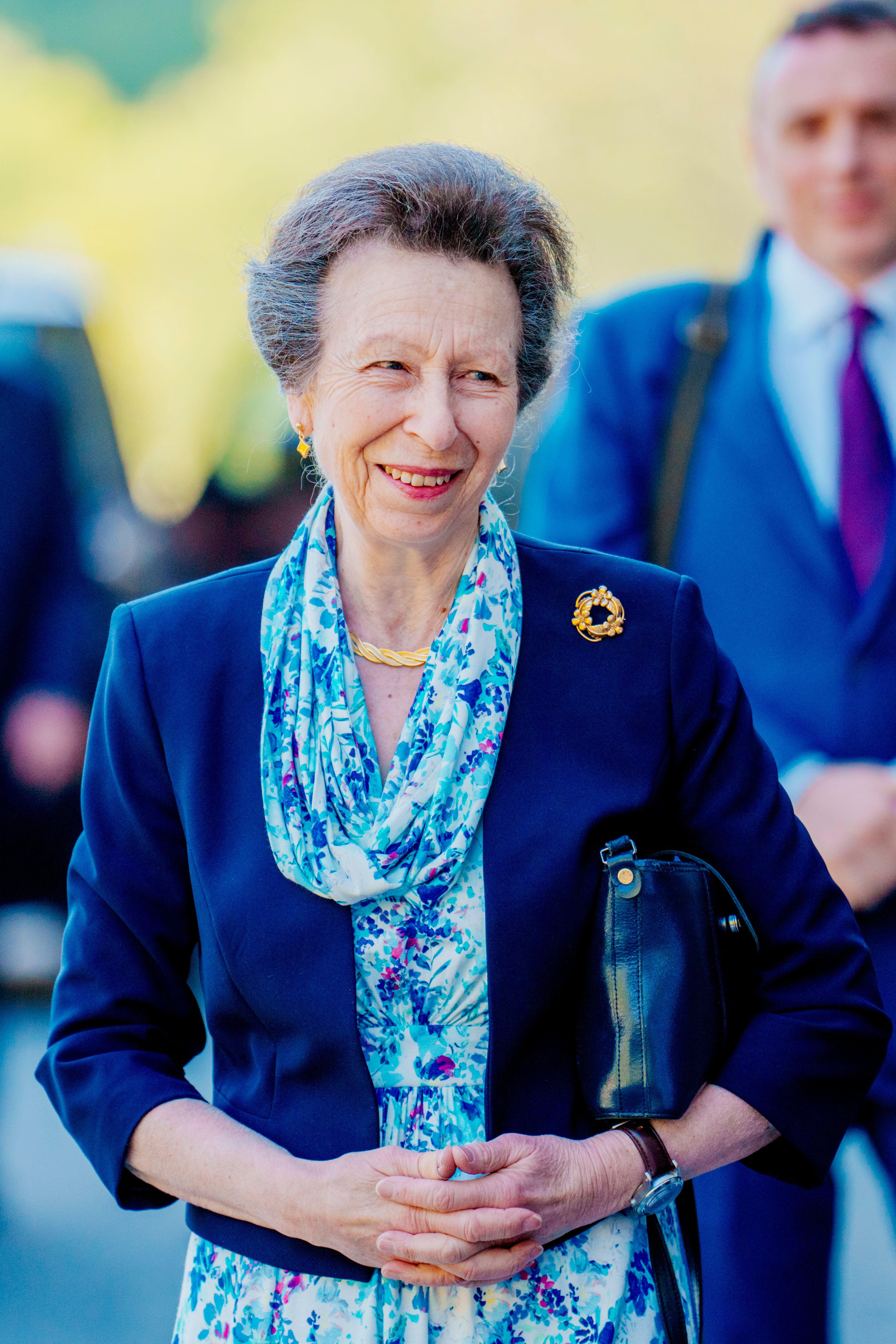
Suddenly, came news of the death of the President of Namibia, an important member nation of the Commonwealth (of which The King is Head). A very senior representative would be expected at the funeral. Normally, it would fall to the heir to the throne, who is always the UK’s de facto ‘chief mourner’ (just as The King was in his days as Prince of Wales). Prince William, very understandably, told his father that he should be looking after his wife. Step forward The Princess Royal. As the long-serving patron of the Scottish Rugby Union, she was supposed to be attending the most eagerly anticipated rugby match of the year, the Calcutta Cup between Scotland and England.
There was considerable surprise and disappointment among the rugby fans at Murrayfield when she failed to appear, though no one, surely, was more disappointed than The Princess herself. Duty had trumped rugby and she was on her way to Namibia for the weekend, returning on an overnight flight in order to be back in time for engagements on Monday. None of this made the newspapers. Public recognition has never been a priority for a princess who is endearingly reluctant to blow her own trumpet.
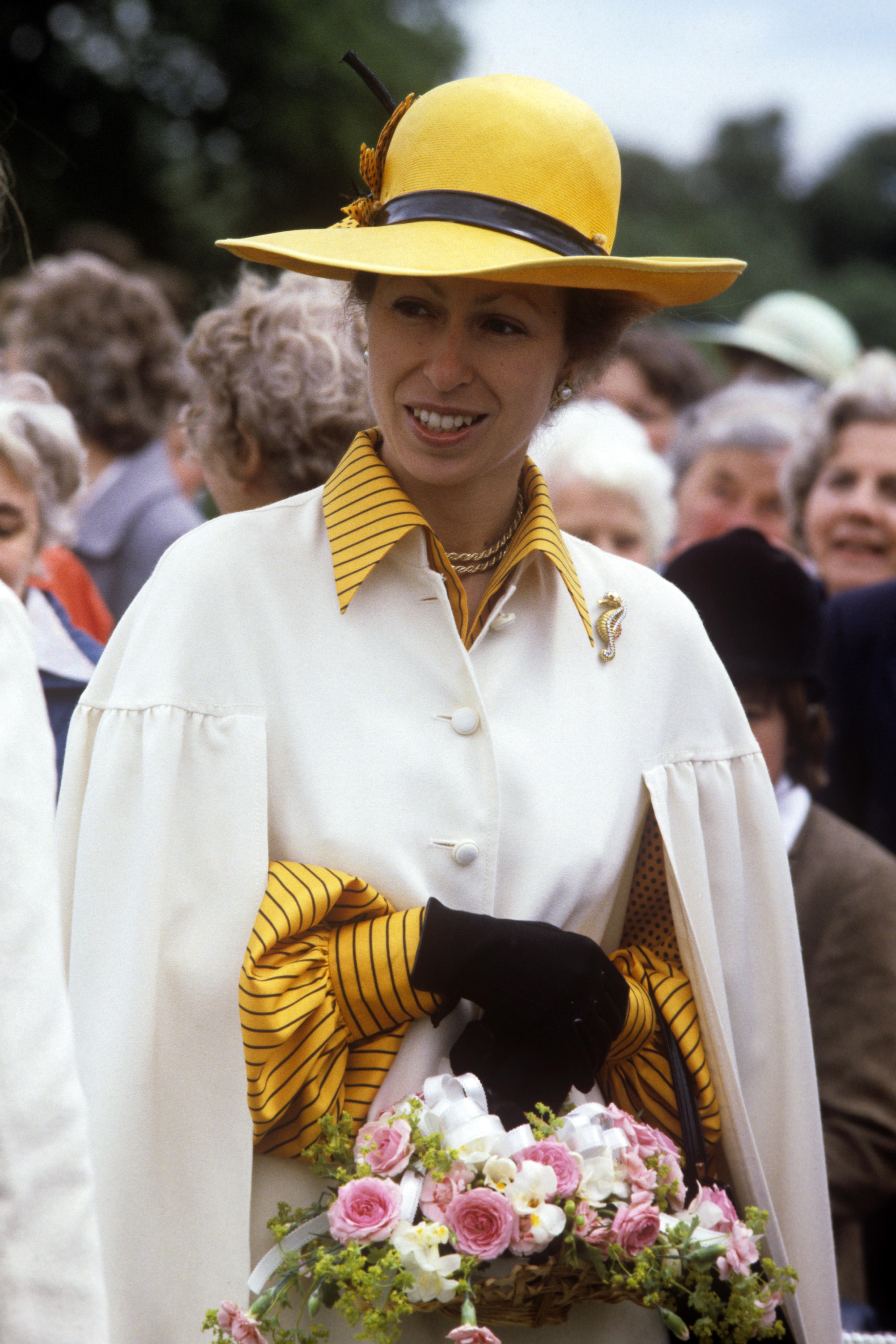
Her position in the line of succession may have fallen to number 18, following the recent birth of a second daughter to Princess Beatrice. Within the Royal Household, however, no one is in any doubt. As she prepares to mark her 75th birthday, The King’s sister is central to the daily operation of the modern monarchy, especially one as ‘slimmed-down’ as the House of Windsor. Year after year, any chart or league table of royal engagements shows The Princess to be among the busiest working members of the family, a fact which is not lost on the general public. Her programme is run from a surprisingly small office at St James’s Palace, but then The Princess is famously low-maintenance. As her son, Peter Phillips, once told me, the secret to her indefatigability is the kiwi fruit she has on standby in her handbag.
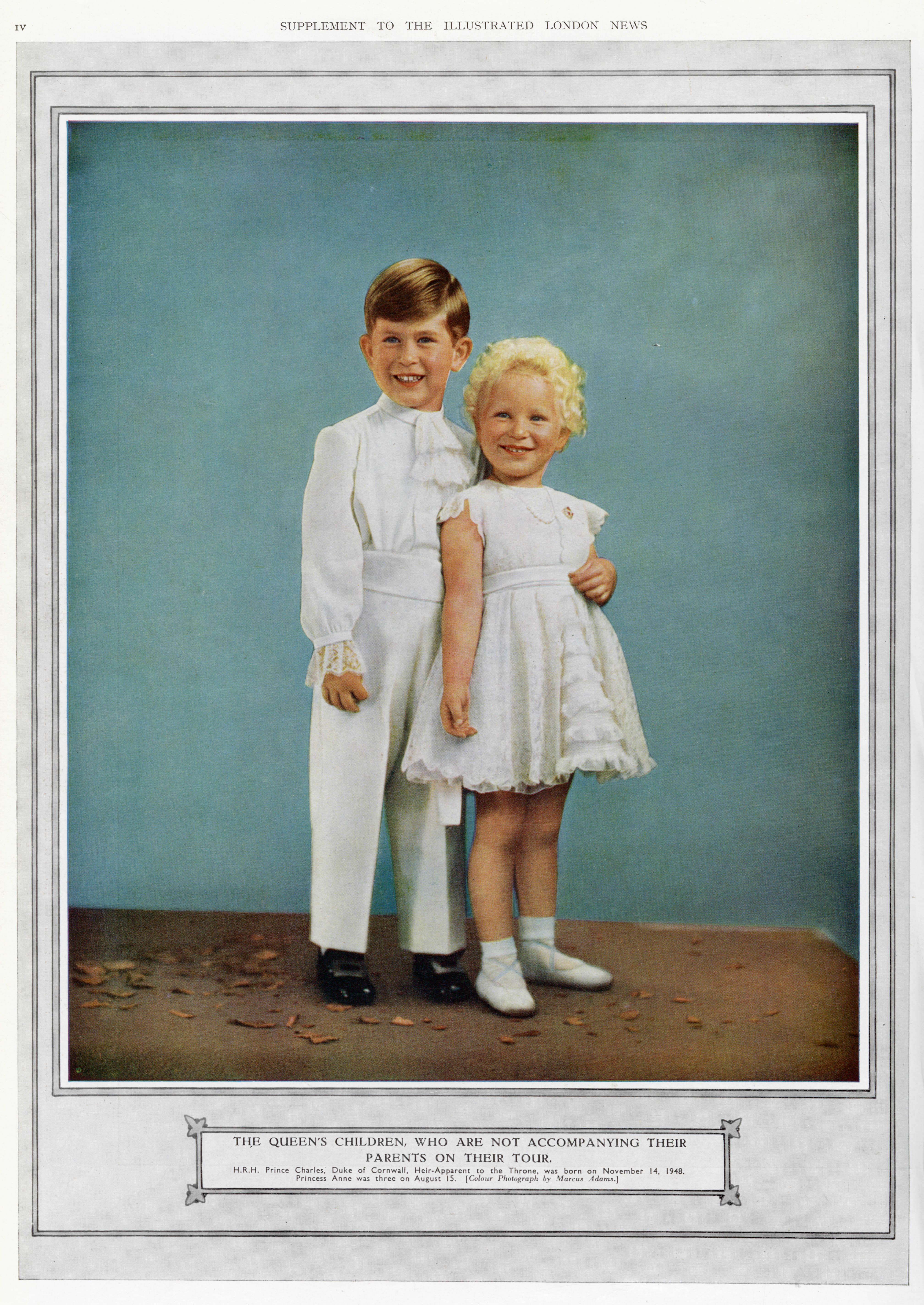
All through 2024, when royal medical crises were threatening to derail the distribution of honours, it was The Princess Royal who stepped up. Apart from The King and The Prince of Wales, she is the only member of the family ‘gazetted’ (entitled) to present honours and decorations on behalf of a grateful nation. So, she would often preside over one investiture after another, sometimes presiding over two of these lengthy ceremonies on the same day.
When senior royal representatives were needed on both sides of the Channel to mark the 80th anniversary of D-Day in June 2024, it was The Princess who led the advance to Normandy. But this is nothing new. With the exception of The King himself, no one else in Britain has been as active in national and international life for as long as The Princess. Along with her brother, she is the only other person alive who was at Sandringham House on the morning of 6 February, 1952 when George VI was found to have died in his sleep. At that very moment, their mother – far away on tour in Kenya – became Queen and all their lives were turned upside down.
Prince Charles, aged three, and Princess Anne, then just one, had been left in the care of their grandparents while their parents undertook a round-the-world Commonwealth tour. To her eternal irritation, Charles was permitted to attend the subsequent coronation of Elizabeth II. Anne was still deemed too young and had to remain at Buckingham Palace and watch from a window. Soon after that, their parents disappeared on another globetrotting trip to visit many of The Queen’s new realms. The Coronation tour was the longest in history and it would be six months before Charles and Anne sailed out in the brand new Royal Yacht, Britannia, to meet their homewardbound parents in north Africa.
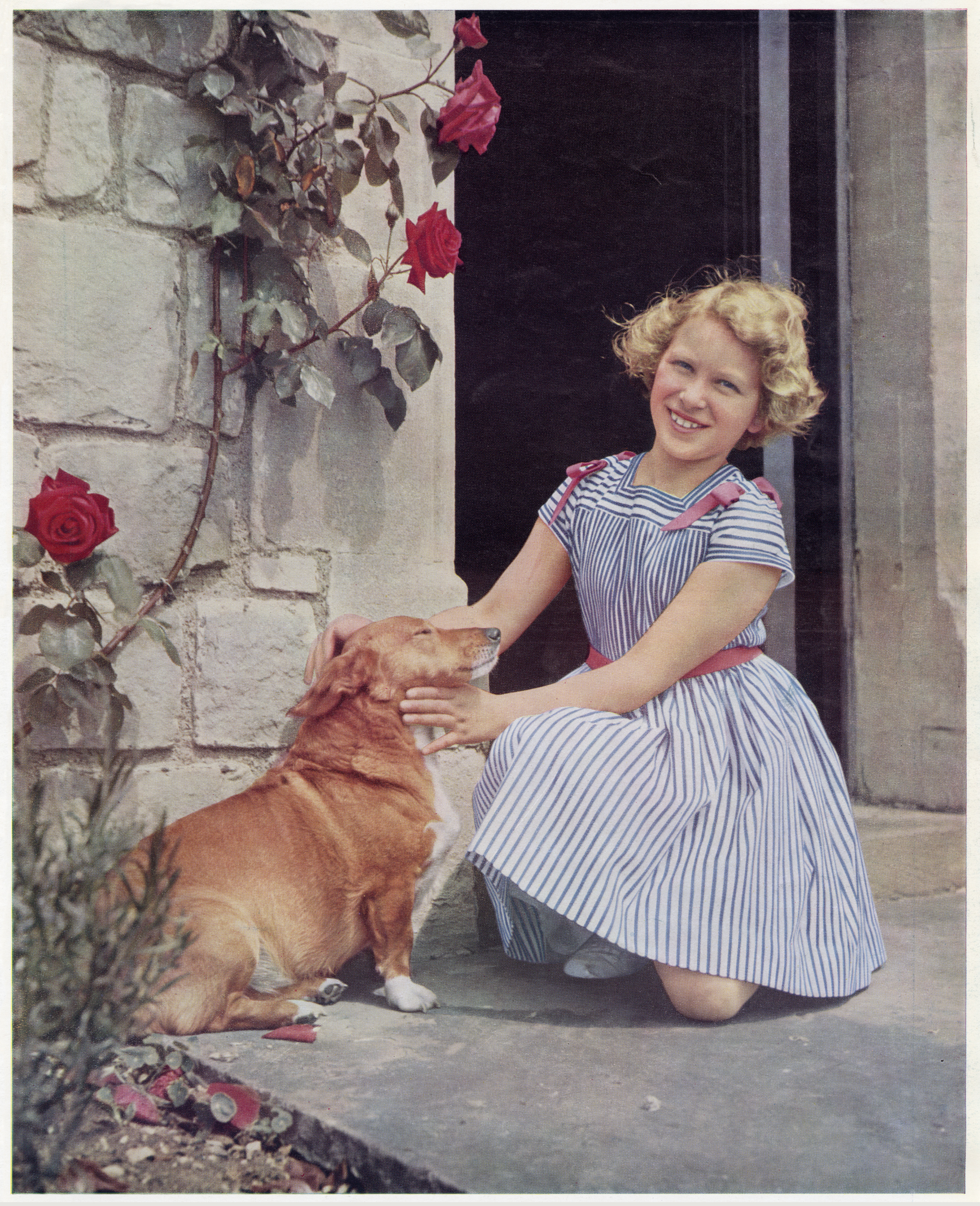
While Prince Charles famously did not enjoy his schooldays at Gordonstoun, The Princess was very keen to go away to boarding school, as she told me when I interviewed her at the time of her 70th birthday. “I was thrilled, frankly,” she said. Compared to the ‘limited’ education she had experience in the hands of a Palace governess, her days at Benenden School in Kent were ‘a major bonus’. She gained perfectly respectable exam results in her A levels but, at the age of 18, had no desire to go to university. Instead, she embarked on two parallel paths.
She would undertake official royal duties and she would pursue a competitive equestrian career – as, indeed, she did. Having become European three-day event champion in 1971, she was voted BBC Sports Personality of the Year (footballer George Best was runner-up) and went on to represent Britain at the 1976 Montreal Olympics. Married to fellow Olympian Captain Mark Phillips in 1973 (with whom she survived an horrific kidnap attempt a year later), she gave birth to a son, Peter, in 1977, making The Queen a very happy grandmother in her Silver Jubilee year.
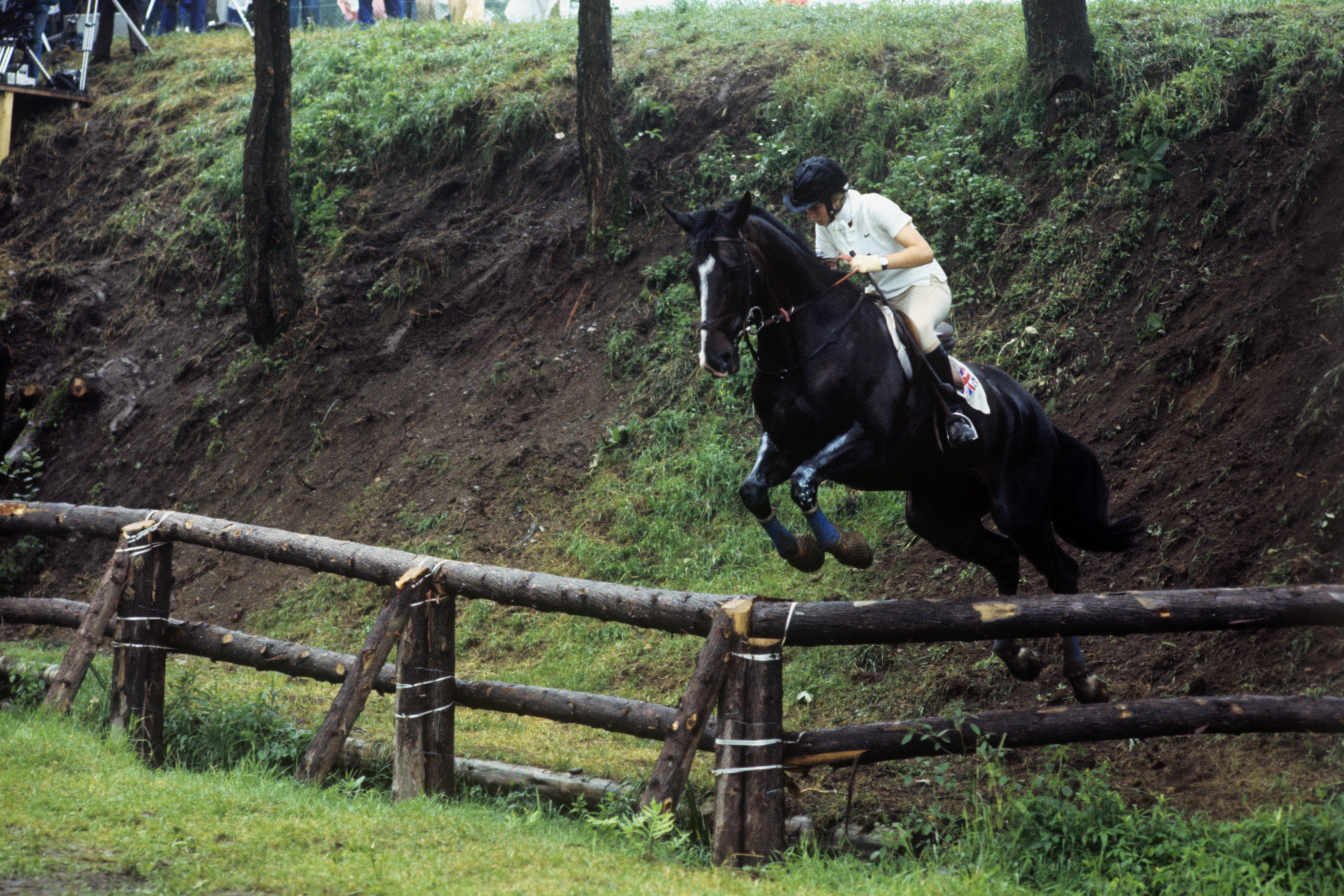
Four years later, she gave birth to a daughter, Zara, who would eventually go on to follow her parents to Olympic glory (and a silver medal) at the 2012 London Games. The late Queen elevated Princess Anne to Princess Royal (an honorary title going back nearly 400 years) in 1987. For more than half a century, The Princess’s assiduous devotion to a core group of charities – including Save the Children and Riding for the Disabled – has been a constant in her life. It was The Duke of Edinburgh who advised her to concentrate on making a difference at the outset. “My father did suggest very strongly that you only pick one or two that you really felt that you could get involved with in the early stages,” she told me. Many more have followed since.
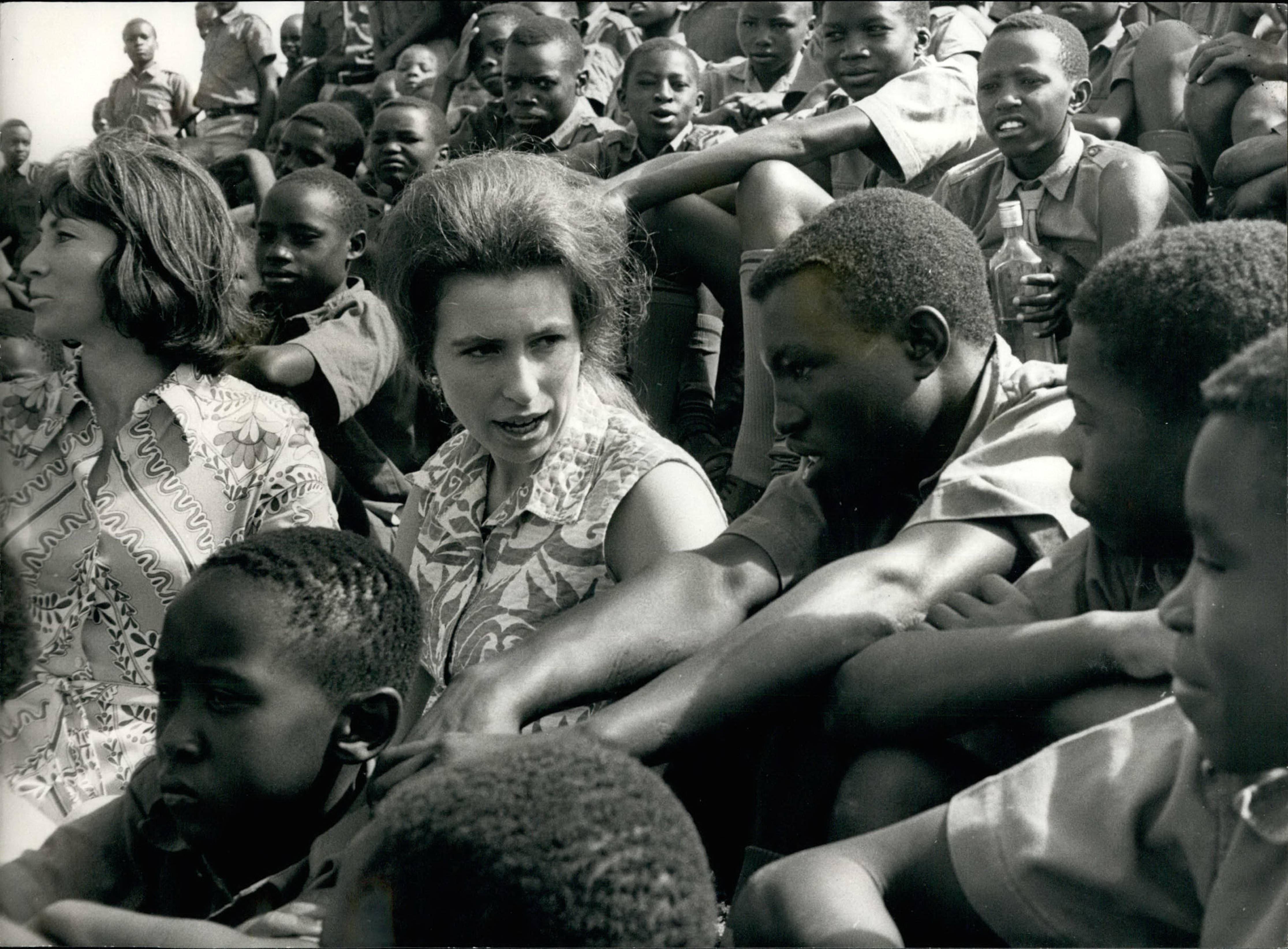
Through it all, though, her priority has been to represent the Sovereign, whether on royal tours right across the globe (she was the first royal visitor, for example, to Outer Mongolia) or in support of the armed forces. Having been Colonel-in-Chief of the King’s Royal Hussars since 1969, she has now been actively involved in regimental life for far longer than anyone else, with the result that she can tell one of today’s serving soldiers of the time she met his grandfather. She retains many links with all three services not just in the UK but other realms, too (from her position as Colonel-inChief of the Royal Australian Corps of Signals to the Royal Canadian Medical Service).
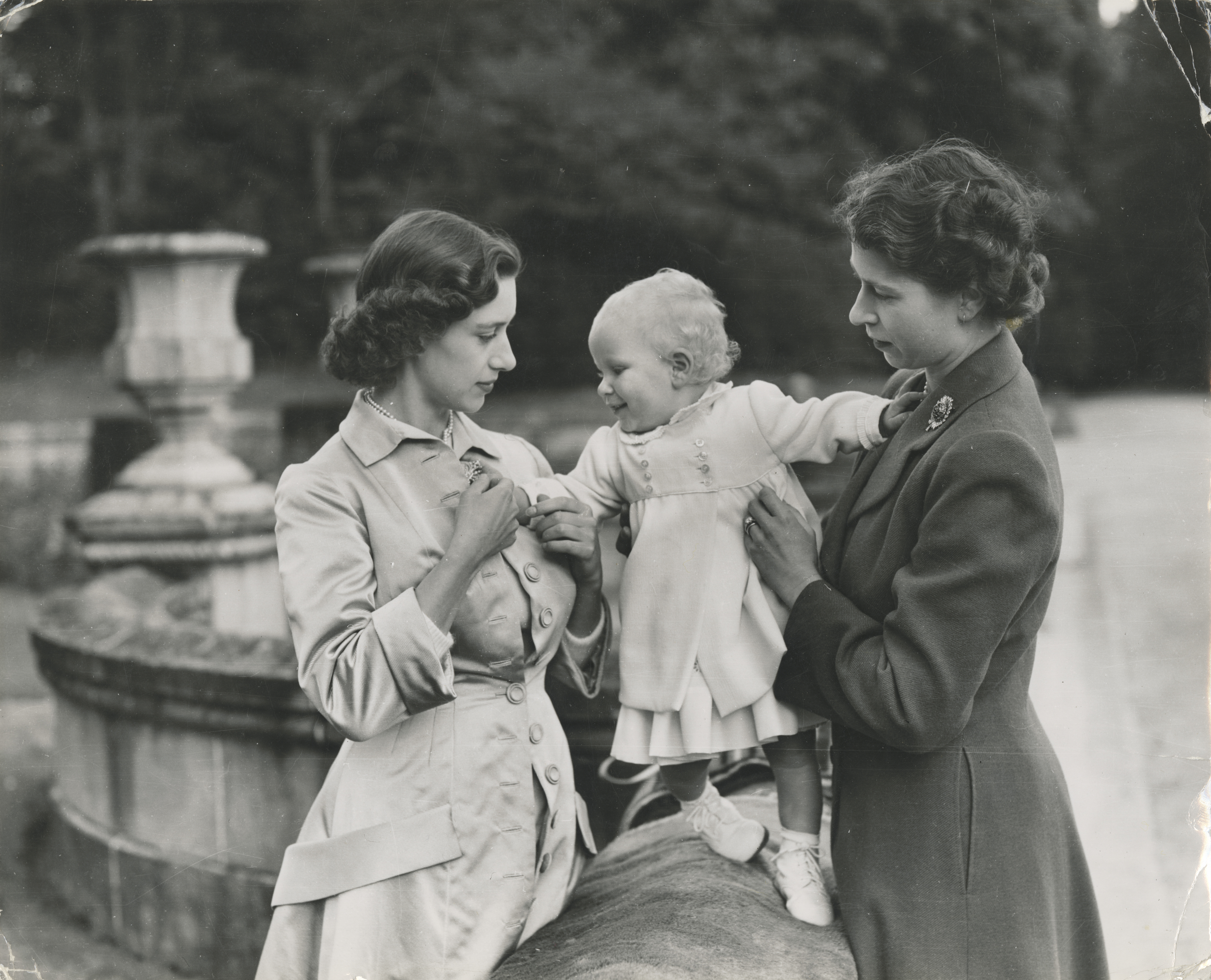
Remarried in 1992, to Vice-Admiral Sir Timothy Laurence, she has always had a great love of the sea, inherited, no doubt, from her late father. When asked to choose where she wanted to hold her 21st birthday, The Princess had spurned Buckingham Palace, Windsor or Balmoral in favour of Portsmouth. She explained that she wanted to mark the occasion on board the Royal Yacht. To this day, her idea of a perfect holiday is aboard the sailing boat she keeps on the west coast of Scotland. Given that The Princess holds an even higher (honorary) naval rank than her husband, her children chuckle irreverently at the prospect of being stuck on a boat commanded by two admirals. “You wouldn’t go on a boat with them!” joked Zara. Family remains at the heart of her life, with her children and grandchildren all living on or close to her Gloucestershire estate. Equally important is the broader Royal Family, and most notably the Sovereign.
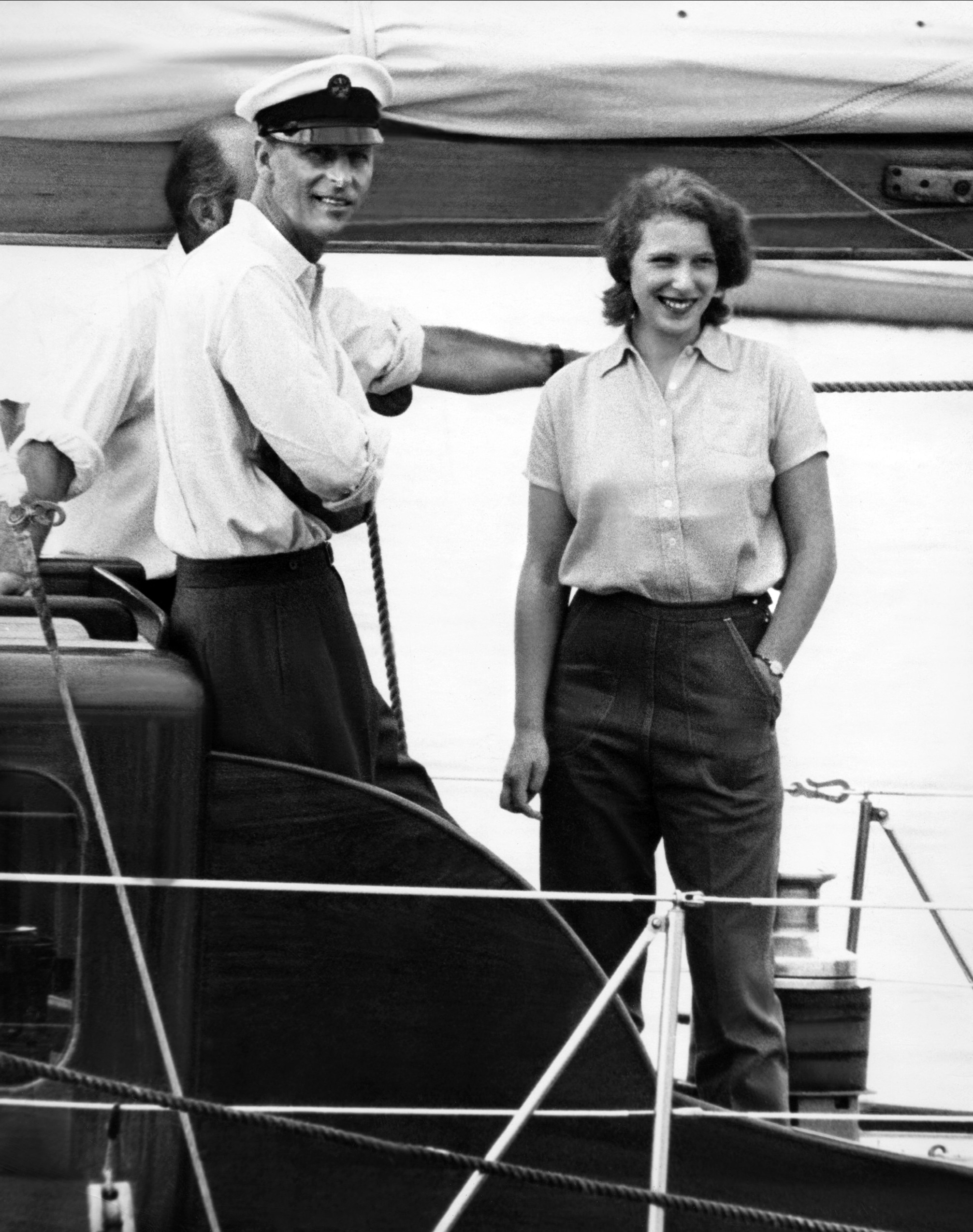
In her final years, The late Queen grew ever close to her only daughter, particularly after the death of Prince Philip. It was The Princess who was staying at Balmoral Castle on the day Her late Majesty died, who escorted her coffin all the way across Scotland and back down to London. Come the Coronation, she chose not to travel to Westminster Abbey in a coach or car like all the other members of the family.
As the Colonel of the Blues and Royals, she holds the honorary title of Gold Stick, a position which dates back to Tudor times when the holder was the monarch’s bodyguard. As such, she was going to ride alongside her elder brother, armed with stick and sword. “They were the earliest senior personal protection officer, your last line of defence,” she said afterwards, explaining the role of her predecessors. “Whether the gold stick was ever really designed to do much damage, I’m not quite sure. But it was certainly an indication of who you were.” If there is one person who has no need of a gold stick to remind us of her position in British life, it is surely Princess Anne.
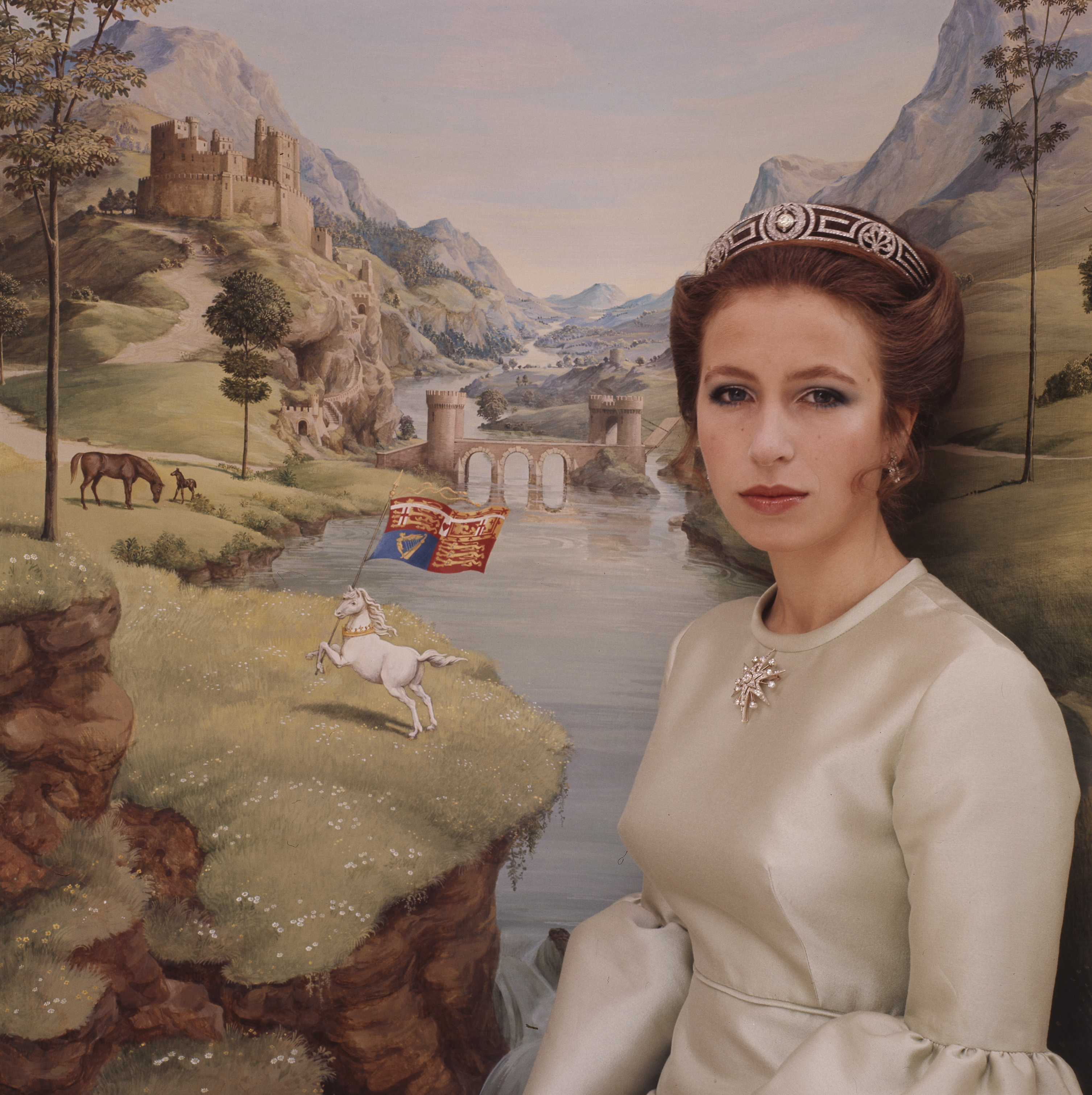
Robert Hardman is the author of the new biography, Charles III. New King. New Court. The Inside Story, and writes for the Daily Mail.
